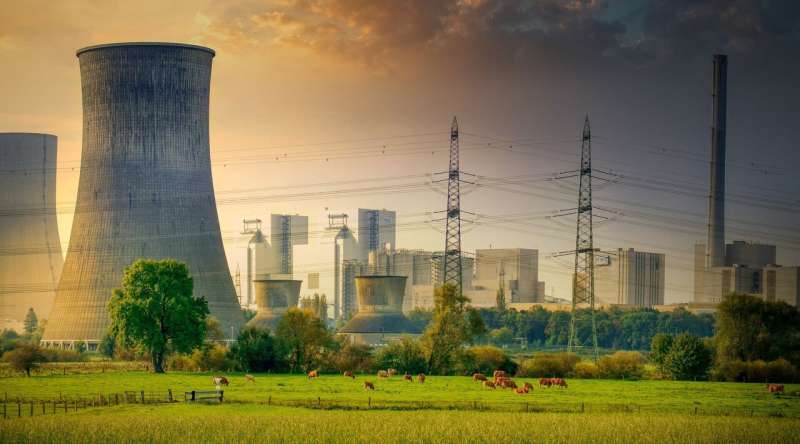High entropy alloy material could improve safety in nuclear reactors

Gaby Clark
scientific editor

Andrew Zinin
lead editor

Nuclear reactors and spacecraft are exposed to high levels of radiation and high temperatures, so it's critical the metals they're made of are strong and stable.
Researchers at the Canadian Nuclear Laboratories (CNL) are studying a special type of metal called high entropy alloy (HEA), which is made by combining several different metals together.
While previous research has shown HEA is extremely tough and can handle exposure to radiation better than regular metals, little is known about what happens inside HEA under such extreme conditions.
Dr. Qiang Wang and colleagues from CNL set about to change that. They used the ultrabright synchrotron light of the Canadian Light Source at the University of Saskatchewan to study a HEA composed of chromium, iron, manganese and nickel. The findings are in the Journal of Nuclear Materials.
"It has to be stable, so it won't change the microstructure at high heat, and have a certain resistance to irradiation," Wang said. "That's why we chose this material. And also because it is reasonably easy to manufacture."
The group bombarded their special recipe HEA with high-energy particles called protons at 400°C and 600°C and exposed it to different amounts of radiation. Using synchrotron X-rays, Wang and the team looked closely for tiny changes.
They discovered small plate-shaped defects, called "Frank loops," which were more common at lower temperatures but larger at higher temperatures. The team also found that the metals started to separate, especially at higher temperatures; some areas in the metal lost more manganese, while others gained more nickel and iron. Their findings, says Wang, provide new insight into specifically how HEAs stand up under extreme conditions.
"We did find some advantages and some things we didn't expect to happen, so obviously this material needs to be better studied to fully understand the applications," Wang said.
However, he added, this material exhibited fewer defects than stainless steel exposed to similar conditions. Stainless steel is approved for and commonly used in nuclear applications.
To Wang's knowledge, this study is the first of its kind in Canada—and the alloy itself was manufactured in this country. Time will tell, he says, whether the alloys will be used for equipment manufacturing or shielding.
"It's still not code approved in the nuclear industry so we don't know exactly what it will be used for, which is why we are testing the material to see if it can meet those qualifications."
Given that many countries are looking to advance nuclear power generation in the face of climate change, Wang said their work has potential real-world applications in improving the safety and functionality of reactors.
More information: Qiang Wang et al, Proton irradiation-induced microstructure changes in a CrFeMnNi high entropy alloy, Journal of Nuclear Materials (2025).
Provided by Canadian Light Source


















